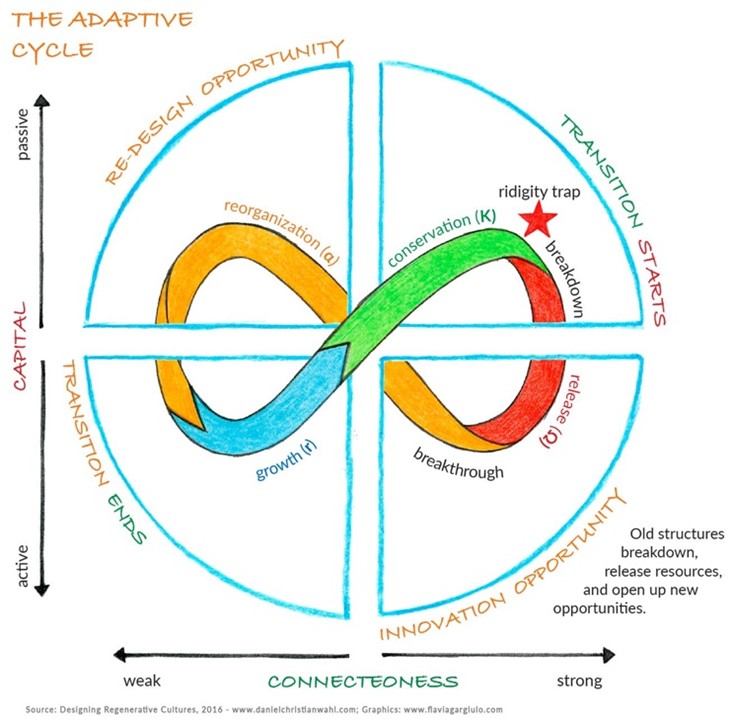Adaptive leadership is about staying open, curious, and responsive in a world that’s constantly changing. Unlike traditional leadership, which often relies on fixed plans and top-down direction, adaptive leadership invites us to listen deeply, work with complexity, and evolve with our environment. In Designing Regenerative Cultures, it’s about recognising that leadership isn’t just about solving problems—it’s about creating the conditions for people and systems to grow, learn, and thrive together.
For emerging leaders, this means letting go of having all the answers and instead holding space for collaboration, emergence, and transformation. It’s a shift from control to co-creation. When we lead adaptively, we become more attuned to the interconnectedness of people, place, and purpose. It’s this mindset that helps build cultures that aren’t just sustainable, but regenerative—where leadership serves not just the organisation, but the wellbeing of communities and the planet too.
One of the most powerful moments in adaptive leadership is the point of disruption—when familiar ways of thinking or working no longer fit, and we’re invited to pause, reassess, and adapt. While it can feel uncomfortable or uncertain, this disruption is actually rich with possibility. It’s the moment where real change begins—where leaders can choose to lean in, listen deeply, and respond with creativity and care. For emerging leaders, recognising these points of disruption as opportunities rather than threats is key to leading with resilience and relevance in a fast-changing world.
Reference: Wahl, D.C., 2016. Designing regenerative cultures. Axminster: Triarchy Press.
